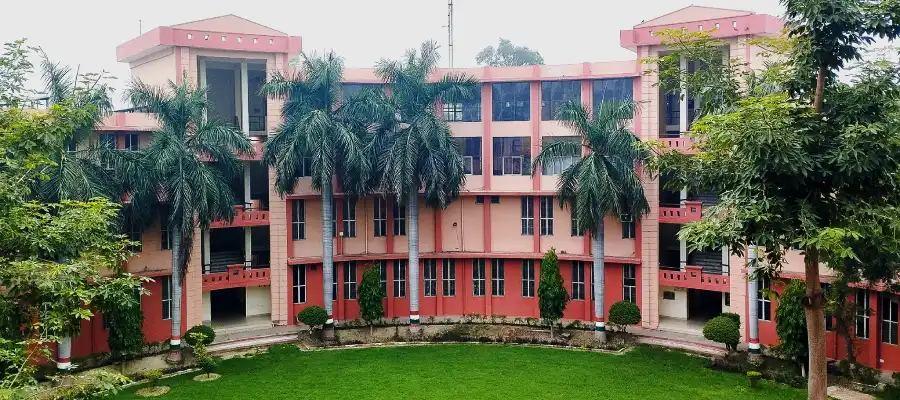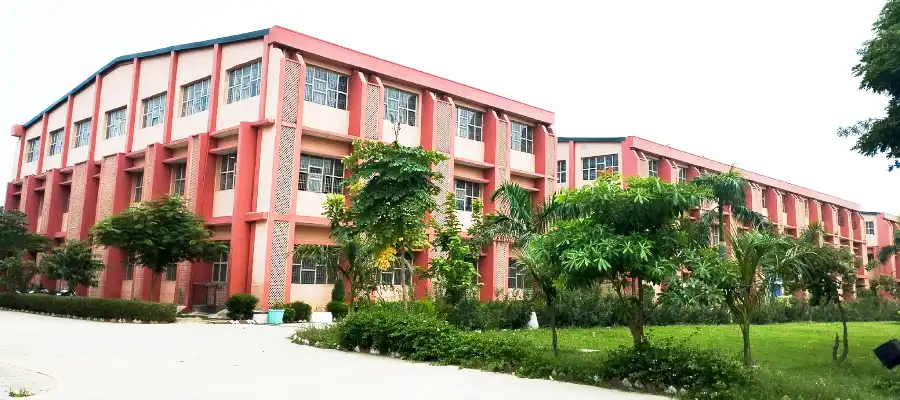Shobhit University believes in strategic growth as envisaged in our mission and vision, to impart quality education through vertical and horizontal integration. It strives to become a world class university, with a global perspective, that educates the future leaders of the world. Therefore, the challenge before the University is to remain in the forefront of cutting edge knowledge and to follow the best international practice(s) in academics.
Shobhit University aspires to make academic issues and commitments as the key concerns of the young generation and thereby, make a significant contribution to the academic developments wherever they are in the world. By the fostering of quality education, research and innovation, the University endeavour to empower youth. Inspired by talent that is regularly enriched and driven by innovation is the guiding philosophy of Shobhit University's enlightened community.
The University translates its vision into reality on the path of achieving excellence in engineering, technology and management, based on the fundamentals of 21 century education to conform and serve basic human needs, for overall development and inclusive growth.
Shobhit University Gangoh
Shobhit University, Gangoh, Saharanpur has been notified by the Government of Uttar Pradesh vide Shobhit Vishwavidhaylaya, Uttar Pradesh Adhiniyam, 2011 (U.P. Act No.3 of 2012) passed by Uttar Pradesh Legislature and assented by the H.E. Governor of Uttar Pradesh. The University is established under section 2(f) of the University Grant Commission (UGC) Act, 1956. (Notification)
Shobhit University, Gangoh was established by the legislative bill of Uttar Pradesh Government vide Shobhit University Uttar Pradesh Act, 3 in 2012. It has since emerged as one of the very few universities that are rural-based in the sense they are deeply entrenched in the rural ambience of culture, environment, market and aspirations while technologically resting on the great shift on the continuum of Tradition and Modernity.
Socio-economic situation of the micro-region:
There are 86 panchayats (149 villages) in Gangoh block and 73 panchayats (134 villages) in the adjoining Block of Nakur, both of Saharanpur district. Combined population of both Blocks is 473001 which carries one of the poorest sex ratios that is about 885 females against 1000 males. Per capita income of these Blocks is 12792 which is better than the state average of 10637, and that is thanks to good irrigation system in predominantly agriculture based economy of this region. However, contradictions show up in terms of poorer sanitation and housing standard. Only 37.44% of population lives in pucca houses as compared to the national average of 59.40%; and only 46.67 % of the total number of houses have sanitation facility. The area stands in a continuum of progress on the back of agricultural growth but lacks miserably in higher education, skill formation and jobs for the youth. The Baseline Survey Report 2010 states categorically: “The situation of Higher Education is deplorable.”
Implications for development of the rural micro-region and the University:
Saharanpur district is well known for certain cottage industries including those in paper production, sugar production and wood carving. Yet the burgeoning population in general in the country, and the mixed culture population of this region has for long been demanding higher education and skill enhancement for its youth. Seeing the situation in its otherwise contributory role in skill development for rural youth then, NICE Society Trust established an engineering college, namely, Shobhit Institute of Engineering and Technology (SIET) at Gangoh in 2000.
Support of patrons and genesis of the University:
This was the first ever Higher Technical Education institution in the Saharanpur Commissionary. The Trust focused on education for local village girls and minority youth, and has supported them with special scholarships and facilities. The trust’s focus on its rural base was further encouraged when in 2003, the Prime Minister Shri Atal Bihari Vajpayee ji, and in the later years the then Deputy Prime Minister Shri L.K.Advani ji and the then Vice President Shri Bhairon Singh Shekhawat ji presided over different scholarship award ceremonies of the Trust. In 2004, Shri L.K.Advani ji inaugurated a 100-bed hospital in the Gangoh campus. A Pharmacy College was established in 2005.
Seeing the transformational effect of different colleges in the aspiration-fulfillment of the local youth, the Trust decided to provide a unifying identity and procedure to all these institutions by establishing Shobhit University as a self-funded State University through the UP Government Act in 2012. Local population has since perceived the University to be a formidable front of their personal aspirations and achievement.
To fulfill the vision of Hon’ble Prime Minister Shri Narendra Modi ji, in 2014, an Ayurveda Medical college and Research Centre was also established. And in the same series of movement of concerns, 2016 saw the emergence of a Yoga and naturopathy college. To enhance the spiritual environment of the region, the University has also established a Centre for Spirituality Research. This may be the only research center which is chaired by a Mahamandaleshwar.
Today, the University has become a people’s own institution, and offers programs that are based on local needs in the areas of Ayurveda, Engineering, Management, Pharmacy, Law, Education, Agriculture, Bio-technology, Bio-medical Engineering, Arts and Humanities, Naturopathy and Yoga, Paramedical Studies, and many other Short duration Skill Development Programs.
The University is proud of its alumni working on the national- international setting of professional excellence. “Empowering Nation through Education”- the University slogan- has not only stemmed the migration flow from the village to the city, but has also improved the socio-economic condition of the region.
The Shobhit University, Gangoh today presents not only its geographical rural character with immensely green surroundings, and pollution-free environment and simplicity of life, but also the rural-ness of its various courses and course additions. Youth and the population aspire for the University and the latter works for them in this sylvan part of North-western Uttar Pradesh where the villages see higher education face to face with open buds of swaying crops.

